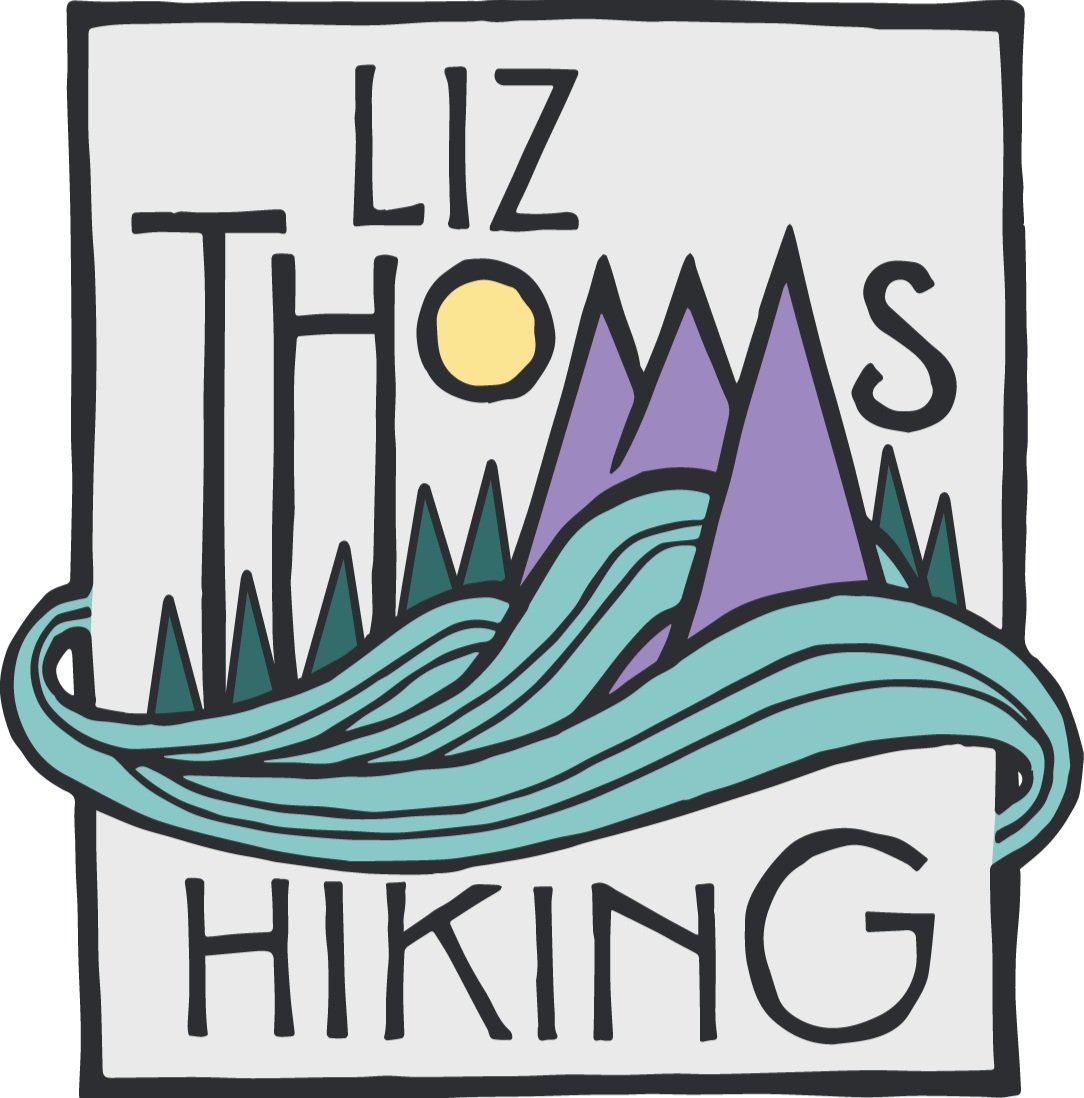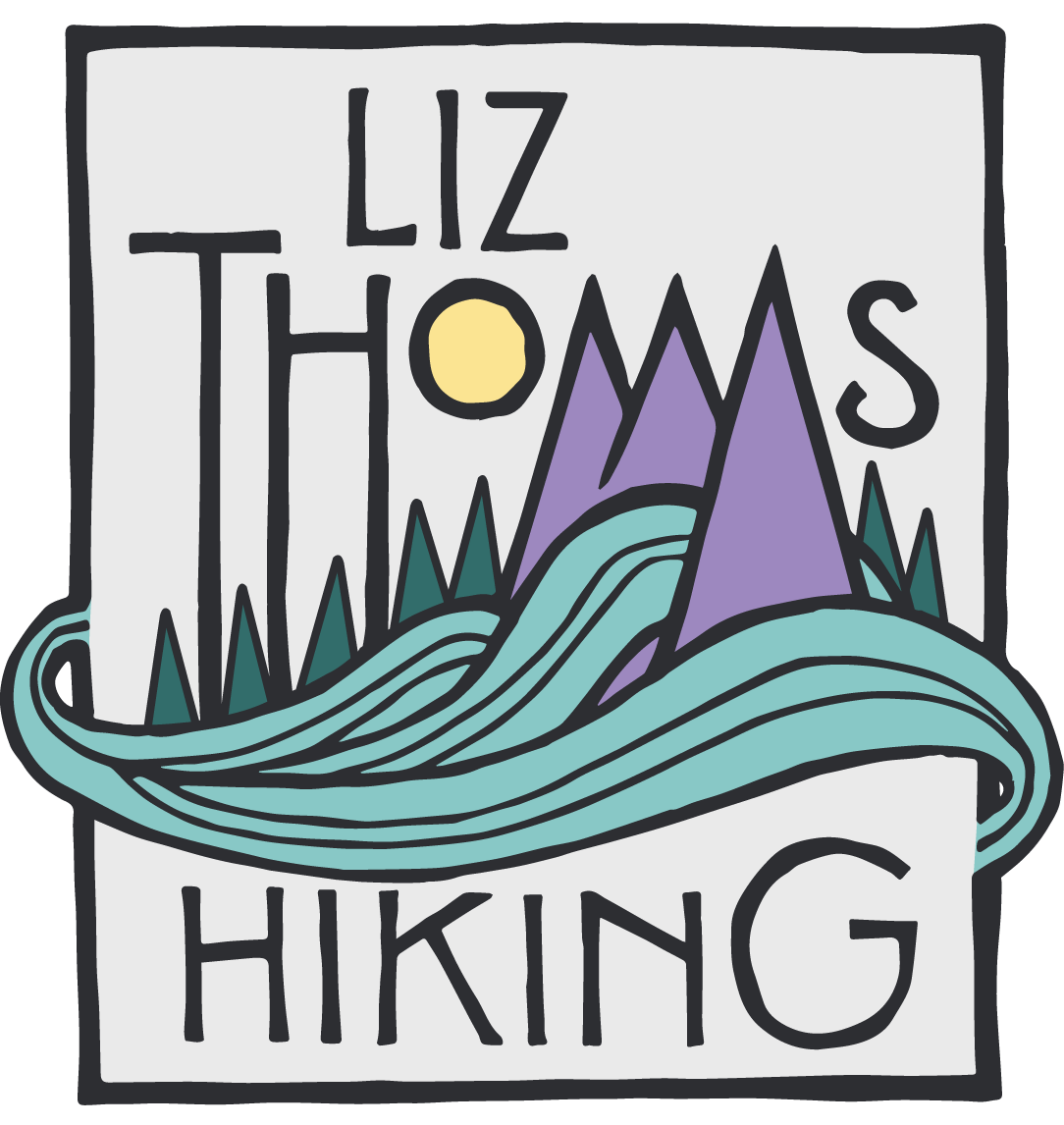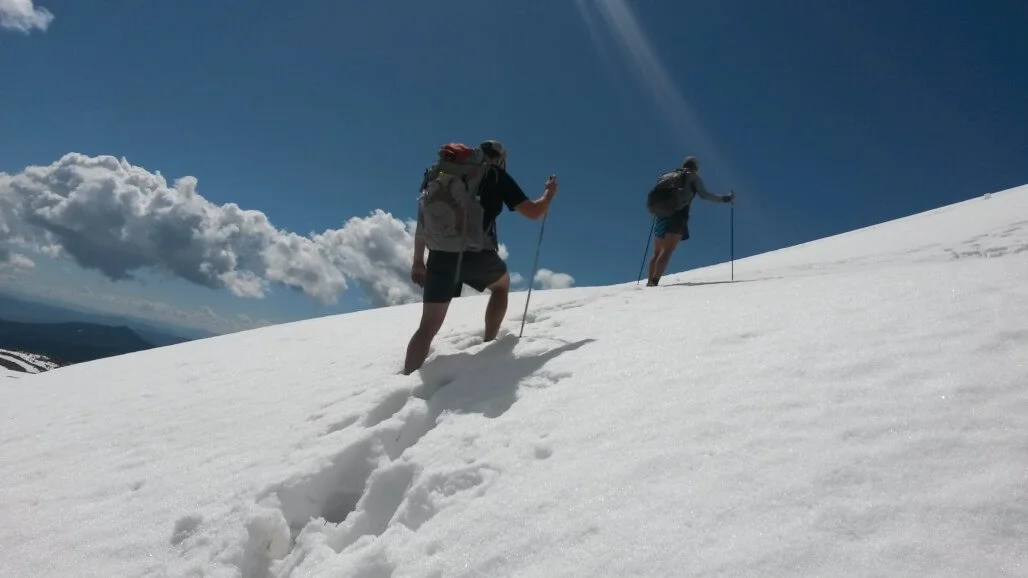Tips to keeping feet happy while snow hiking
It’s no secret this is going to be a big snow year on the Pacific Crest Trail and the Continental Divide Trail, too. It got me thinking about how I learned the hard way how to keep my feet warm in snowy “summer” hiking conditions.
Distance hikers are going to be walking for hundreds of miles in snow—postholing up to their waist in slushy stuff in the afternoon, fording a million little creeks of snowmelt, and otherwise letting their feet be in a state of perpetual Prune City. Worst still, moist feet can lead to unpleasant chafing, skin peeling off, trench foot, and perhaps even a little toenail loss (I know from experience and am sparing you the photos).
Twinkle and Guthrie and I posthole our way in the Flathead Mountains of Colorado in early June
But nothing is more unfun and likely, (in my opinion) than the numb foot. The foot that is so cold and wet that each step—despite having lost some sensation—actually is painful. There’s a lot of suck after all day postholing (aka, sinking into your ankles, knees, or waist in soft snow–see photo above). And while you can’t fight the low-mileage, defeatist attempt at Constant Forward Progress, and associated exhaustion–you can make your feet happier.
Hiking on a glacier in Olympic National Park. Photo by Jake Morrison.
Thru-hikers– with our obsession with keeping things light and our refusal to carry the winter gear that one would bring for, say, a winter backcountry hut ski trip– are asking for some discomfort in the snow. My friend Mags once told me that often, winter backpacking is more pleasant than early spring or late fall backpacking because at least in those conditions, you’re prepared and ready to carry the heavy duty stuff. Yet, we ultralight hikers continue to refuse using real winter gear for shoulder season hiking. And I personally will continue to use the lightest system that will keep my feet happy.
Below is my evolution on footwear choices and how my feet have gone from uncomfortable on snowy thru-hikes to shockingly happy, even in snow-slogging conditions.
Before I became a thru-hiker, I dayhiked extensively in the Sierra, living just outside Lee Vining (Tuolumne Meadows part of Yosemite National Park) including during the record breaking snow years of 2005 and 2006. If my feet got wet in mesh trail runners as I hiked for a day in snow, that was fine because I came home to a warm fire and new socks and shoes.
When I became a thru-hiker, there was no more coming home to new socks and shoes. I knew my feet would get cold and no amount of layering socks would fix it. I needed a Vapor Barrier system to keep my feet warm—but as an ultralight backpacker, it needed to be light. I used old plastic grocery bags, which disintegrated by the first day (see them peeking out in the photo above). I hiked almost a week using increasingly holey bags. Each step, each ford– everything was painful and horrible. Part of that had to do with my experience and discomfort mentally with the Sierras on the PCT. But I can’t help but wonder if my time in the snow would’ve been a lot happier with a better footwear system.
By the time I hiked the Continental Divide Trail, I was deadset on fixing my snow-time footwear mistakes. I purchased some cottage-industry-made waterproof socks, which would create a durable, relatively lightweight Vapor Barrier on the inside of my regular mesh trail running shoe. I experimented wearing my usual thru-hiking thin Darn Tough running socks on the inside of my waterproof sock. I experimented wearing them on the outside (this was bad as the Vapor Barrier created chaffing when worn right against the skin). Then, I tried wearing socks in- and outside-of- the Vapor Barrier sock. This worked the best—but, my shoes were too small to sustain all this new sockage (three pairs for those counting). It was a fail that left me with blackened toenails and significant chafing on the top of my foot. Not to mention that my mesh trail running shoes came out of the snow as shredded as my feet.
Last year, I re-hiked the section of the CDT in the high remote mountains of the Southern San Juans and San Juans. With almost a decade of additional thru-hiking knowledge behind me PLUS major advancements in footwear technology, I was ready to test my feet and myself in weeks of snow. First, I wore my usual Darn Tough running sock. Then I covered it in a Seal Skinz waterproof sock, then I wore the Altra Lone Peak Neoshell—a kind of waterproof version of the trail runner that I always wear (if you want to know more about the Neoshell, I wrote a long-term review here Gear Review: Lone Peak Neoshell). To top it all off, I added an lightweight insulated footbed, which may have done nothing, but seemed like minimal addition for potential of more warmth.
By the time I emerged from feet of snow, I felt like I had found the Holy Grail.
This was the footwear combo that was actually going to keep my feet warm and comfortable!
Gear doesn’t always make or break the trip (or segment of a trip). But sometimes it does. The less optimal the conditions, the more good gear will help you. The nicer the conditions, the more you can get away carrying bad gear.
Here’s why I think it works
Wearing my usual hiking sock as the initial layer prevents chaffing from the moist waterproof sock directly against the skin. The waterproof sock adds additional warmth with a Vapor Barrier system. The Neoshell shoe adds the most major piece of warmth by creating an extra Vapor Barrier around your feet—a double whammy of warmth. Since I usually wear Altras in the mesh version as my normal hiking shoe, I knew that it would fit and work with my foot, so I didn’t run into any of the weird sizing or gait issues associated with changing footwear for snow conditions. As any thru-hiker can tell you, it takes forever to find a shoe model and brand that works for your body (some hikers walk the whole Triple Crown before finding “the shoe”). If your normal hiking shoe comes in waterproof, stick with that brand.
The Neoshell low top versions without a waterproof sock work fine in warmer snowy conditions or dayhikes.
Another advantage of the sock+waterproof sock+Neoshell trail runner system is that it was a relatively dry system for a Vapor Barrier. I notoriously hate putting on wet socks and my hiking partner Naomi calls me the “Sock Lady” because I bring a new pair to wear each day (give or take a few days). So each day, my base sock would be new (and dry). While the wet Vapor Barrier socks would’ve been a pain to put on in the morning, the base sock was a protective layer against those nasty wet socks. The Neoshell shoes have a mesh base so dry out surprisingly quickly and felt surprisingly dry each morning (as long as I remembered to keep them in a plastic bag in my bivy at night to prevent them from freezing solid).
11 hikers walked–er, postholed–80 miles through the snow with different footwear situations. I personally think I was the happiest, having finally learned how to keep my feet warm.
Last May, I rolled through the southern San Juans with a crew of 11 hikers. Others in the group tried out different systems for keeping their feet warm: waterproof sock+trail runners, double-thick wool socks+trail runners, normal sock+waterproof shoes. Many got cold feet. With the double protection of the two Vapor Barrier System, my feet were warm enough I could concentrate on navigation and frankly, the beauty of the mountains I got to see totally covered in snow. The system was elegant, lightweight but surprisingly durable, didn’t require a lot of extra stuff, and dried out quickly (well the Neoshell shoes dry in 20 minutes in full sun, sans the stock footbed. The after-market insulated footbed seemed to dry quickly, though.).
Snowshowing on Mt. Hood this past February. (Snowshoes not shown) Photo by Kate Hoch.
Improving the System
On a snowshoe trip in February, I took out the new-as-of-this year Lone Peak Neoshell Mids (aka the Hightop Altras on a snowshoeing hut trip with some hikertrash. While I’m not usually a mid kinda girl, they seemed an improvement over the lowtop Neoshells for snowshoeing and keeping your ankle your warm when postholing. I also think the firmer shoe helps keep the snowshoe attached better. I hate the idea of doing part of a thru-hike in a mid, but am seriously considering doing it this year myself if the snow conditions call for it. They’re going in my bounce bucket for easy retrieval.
As a thru-hiker, I’m quick to tell new hikers that waterproof shoes aren’t for all conditions. But when it gets cold and snowy, dry normal socks+waterproof socks and waterproof shoes (with appropriate sizing) were the key for me to solving a painful-numb-foot problem that had been plaguing me for years. I should’ve read the other stuff on the Internet about this before busting out into days of snow, but I’m stubborn and insisted on figuring this out myself. I’m glad I finally discovered the perfect combo and I hope that by reading this maybe it can spare others from the discomfort I’ve experienced thru-hiking and backpacking in the snow over the years.
Disclaimer: Over the years, I’ve purchased gear from all the companies in this guide as well as have been given gear by some of the companies to test. I was under no obligation to write a review but wrote this because it’s going to be a high snow year for many PCT and CDT hikers and I wanted to share it with others because I was too much of an idiot to look this stuff up myself when I did my thru’s.







